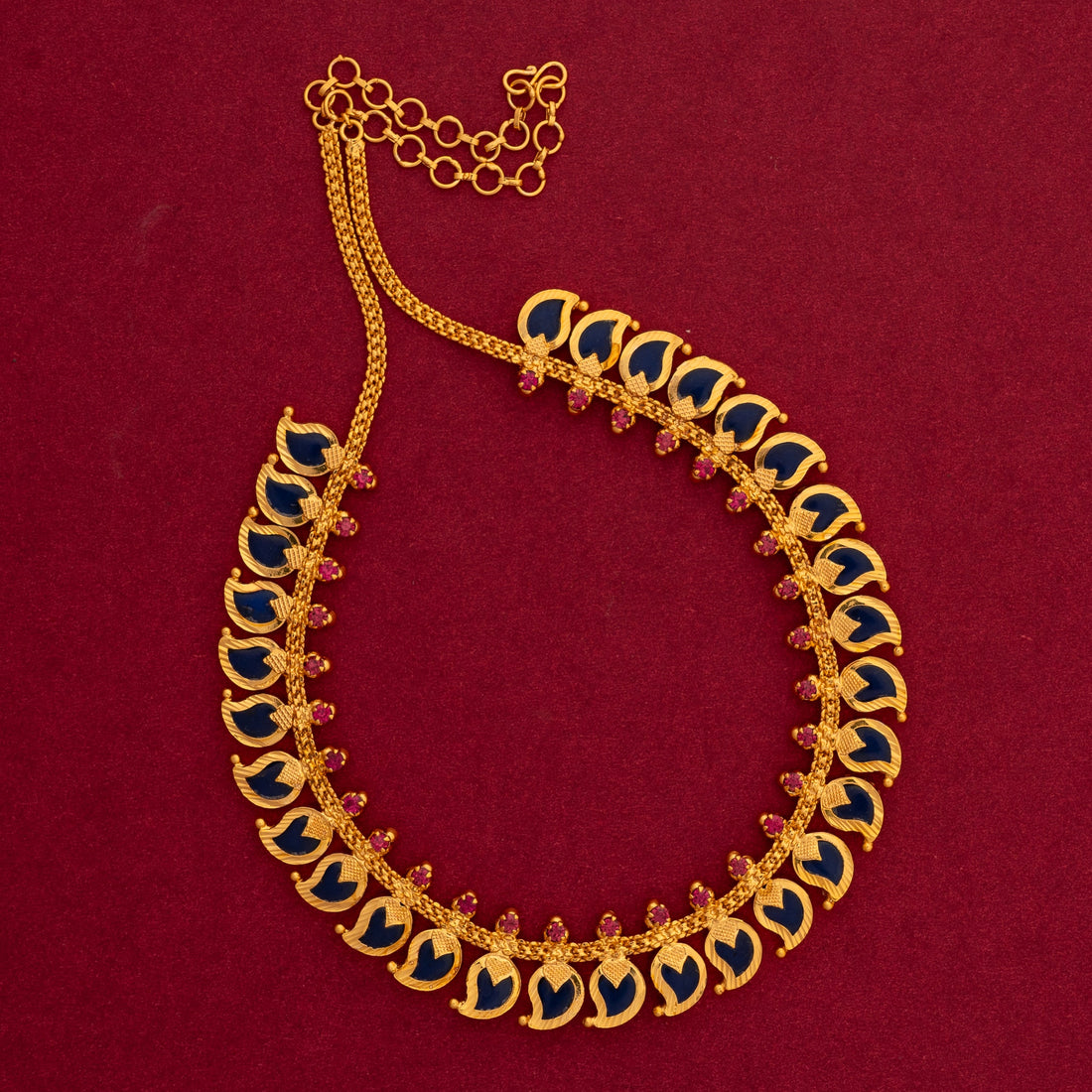Jewelry in India is more than just an accessory—it is a piece of tradition, a marker of identity, and a reflection of cultural heritage. Among the many ornaments that hold a special place in Kerala’s traditional jewelry collection, the Mango Mala stands out for its distinct design and symbolic depth. This elegant necklace, with its beautifully crafted mango-shaped motifs, continues to captivate hearts across generations, bridging the past and present in a single string of timeless beauty.
The Story Behind the Mango Mala
The Mango Mala, known locally as Maanga Mala, derives its name from the mango-shaped units or pendants that are strung together to form the necklace. In Indian tradition, the mango fruit represents success, growth, and divine affection. It’s no surprise then that a necklace made in its likeness would become a favorite in bridal jewelry and religious ceremonies.
Though its precise origins are difficult to trace, the Mango Mala is deeply embedded in Kerala's traditional attire, particularly among the Malayali Hindu community. It has been an integral part of wedding trousseaus for generations, worn proudly by brides as a symbol of prosperity, beauty, and grace. Even today, it remains one of the must-have ornaments in a Kerala bride’s jewelry collection.
A Masterpiece of Craftsmanship
The Mango Mala is a work of art, not just an ornament.. Each mango-shaped piece is intricately designed and traditionally created by hand from gold. Some versions feature delicate carvings of peacocks or floral patterns within each mango motif, while others are adorned with small gemstones or enamel work that adds a pop of color.
What makes this necklace even more special is the skill and precision required to make it. Each piece must be symmetrical and perfectly aligned, ensuring that the necklace lies gracefully on the neck. In high-end versions, artisans sometimes use filigree work and combine multiple types of gold finishes—such as matte, antique, or polished—to add texture and depth.
A Bride’s Pride
In Kerala weddings, the bride is usually adorned with multiple layers of gold jewelry, and the Mango Mala often takes center stage. It’s not only aesthetically striking but also loaded with emotional and cultural significance. It symbolizes a woman’s transition into a new phase of life, and wearing it is seen as a blessing for a prosperous future.
Families often pass Mango Malas down through generations, making them treasured heirlooms. The pendants are more than simply bits of gold; they are signs of love, memories, and stories from relatives. Seeing a mother’s Mango Mala on her daughter’s wedding day adds an emotional layer that few modern accessories can replicate.
The Evolution of Style
While the traditional Mango Mala is predominantly made of gold, today’s fashion trends have embraced its design in new and creative ways. With the rising popularity of imitation jewelry, the Mango Mala has found a fresh audience among women who want the traditional look without the heavy investment.
Modern Mango Malas are now available in a variety of materials including gold-plated brass, copper alloys, and even thread-based versions for casual wear. They come in minimalist designs for everyday use and more elaborate versions for festive occasions. These new interpretations make the Mango Mala accessible to everyone, regardless of budget.
Moreover, the Mango Mala is no longer confined to bridal wear. It pairs beautifully with sarees, lehengas, and even fusion outfits, allowing women to celebrate tradition in a contemporary context. Fashion influencers and stylists have also started incorporating the Mango Mala into modern fashion narratives, further proving its versatility.
Cultural Symbols in the Modern Age
Even in an era of rapid globalization and changing fashion preferences, the Mango Mala has managed to hold its own. Its continued relevance is a testament to how deeply it is woven into Kerala’s cultural fabric. Unlike trends that fade with time, the Mango Mala thrives on its connection to identity and tradition.
Wearing a Mango Mala is more than making a style statement—it’s about carrying forward a legacy. Whether made of pure gold or imitation materials, the essence remains the same: a celebration of Kerala’s artistic heritage and timeless femininity.
Final Thoughts
The Mango Mala is not just jewelry—it is an emotion, a memory, and a piece of heritage. Its beauty lies not just in the gleam of the metal or the elegance of its design, but in what it represents: tradition, family, love, and pride. As times change, the Mango Mala adapts, but it never loses its soul.
For those who wear it, whether for a wedding, a festival, or simply to feel connected to their roots, the Mango Mala remains a graceful reminder that some styles never go out of fashion—they only grow more meaningful with time.

